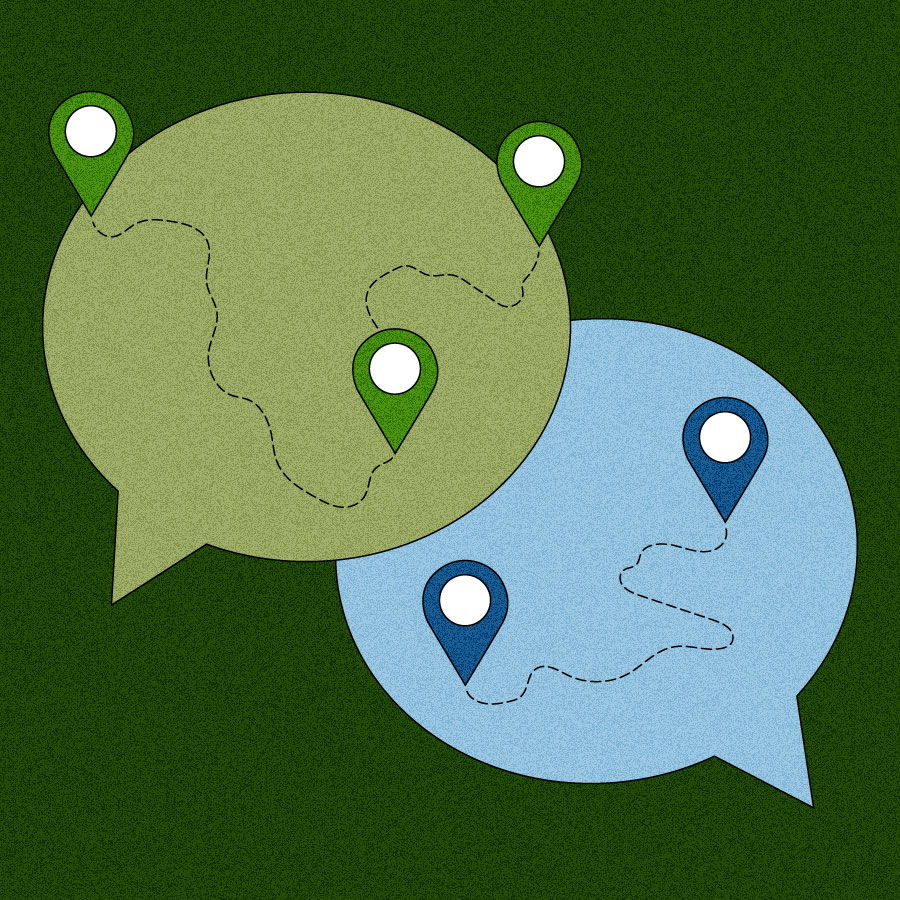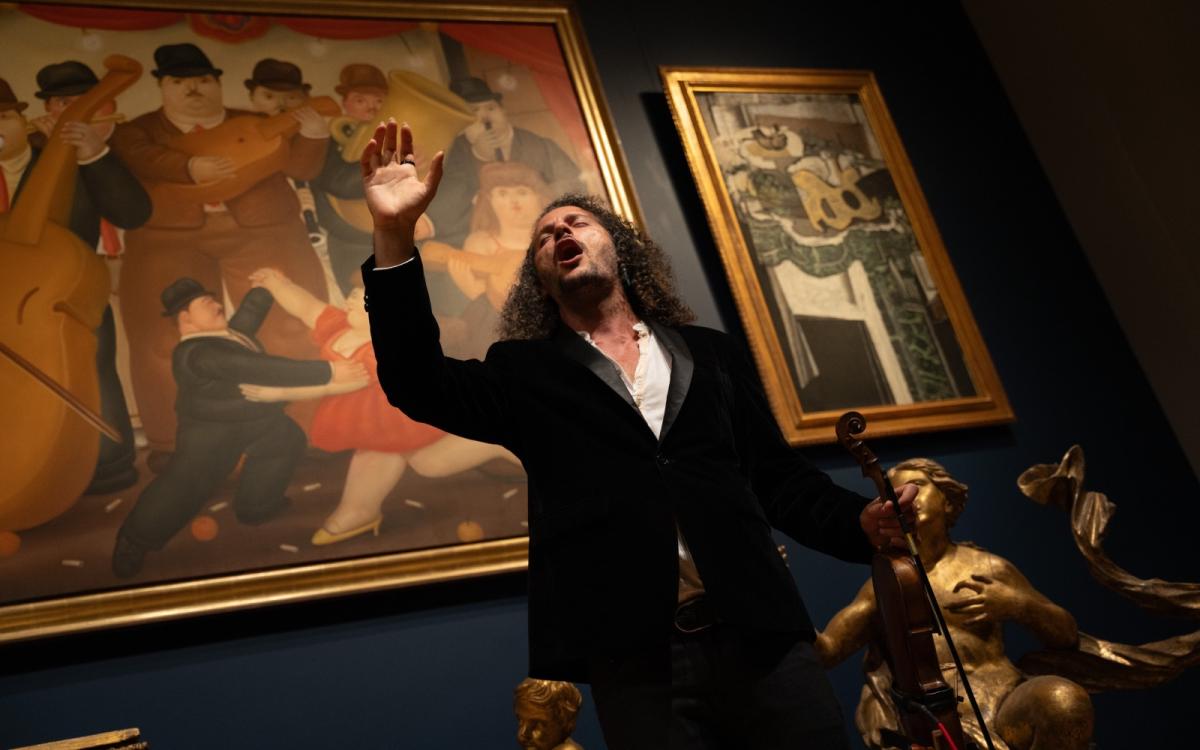The vision
“Narrative agency is most important when reminding people of their own ability to actually do what they’re capable of.”
— Ahmed Badr, co-founder of Narratio
The spotlight
When Rayan Mohamed was 4 years old, her family left their home in Mogadishu amidst the Somali Civil War. For nine days, they traveled by bus throughout the country. “We moved to different cities that were a little bit safer, and it didn’t work out,” Mohamed recounted. “And my mom decided that it was time to move out of the country.” Eventually, they arrived at the Awbare Refugee Camp in neighboring Ethiopia, intending to spend just one night there. But, with the possibility of returning to their home country narrowing, Mohamed’s family decided to apply for asylum in the U.S. They would spend seven years in the camp before finally being granted the opportunity to move to Syracuse, New York, in 2014.
In recent years, Mohamed has created short films and poems about her time at the camp. “Anytime that I want to draw from an experience, it’s always going to be in Ethiopia, because that was the most pivotal experience [of] my life,” she said. She described her time there as extremely difficult, with her day-to-day governed by stifling mundanity. “Waiting for answers that may or may not come,” she recounts in one of her poems, “yearning for something that exhausts our wishes.” But, she was also bolstered by support from her tight-knit family of women — her mom, grandma, and sisters. Their steady closeness cultivated an emotional resilience that Mohamed carries with her to this day. “In a cozy tent where memories were made,” reads the poem, “We found comfort in each other’s presence.”
Mohamed recited these lines at the Metropolitan Museum of Art in July. Her performance was part of an arts showcase for Narratio, a fellowship that empowers resettled refugee youth to tell their own stories. Through the program, arts and culture workers skilled in various mediums — including poetry, photography, filmmaking, and visual arts — guide participants through an intensive storytelling project.

Rayan Mohamed at the Metropolitan Museum of Art this July, participating in a special showcase as part of Narratio’s fifth anniversary. Edward Grattan
“The goal of the program is to provide opportunities for the fellows to tell stories on their own terms,” explained Brice Nordquist. He co-founded the Narratio fellowship in 2019 with Ahmed Badr to combat media representations that flatten and homogenize the refugee experience. By giving displaced young people the opportunity to process their experiences through storytelling — and giving a platform to those stories of individual journeys — they hope to communicate the human side of migration, and its many complexities.
Though every migration story is personal, these experiences are becoming more and more common on our rapidly warming planet. According to recent projections, the number of people displaced by environmental factors could increase to over a billion by 2050. And climate change’s impacts on global migration are already visible: Since 2008, an estimated 21.5 million people have been displaced annually by environmental hazards.
Conceptions of “climate refugees” are often limited to those displaced by acute disasters such as earthquakes, wildfires, and floods. But climate change can be one of many complicating factors, or a driving force behind the scenes. “Displacement stories are more complex, when you think about the roots of them,” Nordquist said. Many Narratio fellows are from the Arab Peninsula, the Horn of Africa, and Central Asia — regions in which escalating climate threats and environmental degradation increasingly drive migration.
By working with displaced young people, Badr and Nordquist have acquired a more expansive view of climate displacement, they said. In some cases, fellows’ migration pathways illustrate how conflicts over land, food, and other natural resources are inextricable from environmental changes. In others, they demonstrate climate change’s role as a threat multiplier.
Mohamed’s family, for instance, initially left Somalia due to the ongoing civil war. But environmental factors drove her family’s eventual move to the United States. During their time in Ethiopia, volatile weather made life in the refugee camp increasingly untenable. Severe droughts compromised their food and water sources. These dry periods were interrupted by tornadoes and flooding, which destroyed improvised shelters and even drowned young children. It’s an example of how climate volatility can drive further involuntary movement — making refugees’ lives even more tenuous, and dissuading displaced people from settling in neighboring countries that are vulnerable to climate impacts.
And, more and more, environmental hazards are becoming the primary cause of displacement. In 2021, for example, most displacements from Mohamed’s home country, Somalia, were “primarily related to climate,” according to the United Nations High Commissioner for Refugees. Although these conditions can send people across borders, people usually move within their own countries, including in wealthy nations like the U.S. that may be more commonly thought of as resettlement countries.
Nordquist and Badr anticipate a greater focus on environmental issues as the Narratio program expands — as well as a shift in society’s understanding of who a refugee is, and who is vulnerable to displacement. “The shape of the program over time could look a lot different based on the forms of displacement that people are increasingly facing around the world,” Nordquist said. “We anticipate that the types of people who are displaced from [climate] issues will increase.”
Badr, who has a background in environmental organizing, and is himself a former refugee from Iraq, emphasized how important it is for establishment venues to center refugee-led perspectives. Throughout Narratio’s five years, the program has reached a cumulative audience of over 3 million people. Fellows have showcased their final works at the United Nations, Metropolitan Museum of Art, and The New York Times.
He also recognizes the potential for powerful narratives to shape action — both at the societal level, and for the storytellers themselves. By crafting stories through the fellowship, participants are reminded of the value of their own experiences, he said. This, in turn, can empower them to use their voices to drive change. “Narrative agency is most important when reminding people of their own ability to actually do what they’re capable of,” Badr said. “It’s just remarkable to see what that process of claiming a story on your own terms can unlock.”
Mohamed had no experience with filmmaking or videography prior to participating in the fellowship in 2020. The program granted her access to camera equipment and mentorship from a documentary filmmaker; she also workshopped her project with journalists, digital content producers, and film editors. “My whole life, I never really felt comfortable sharing my refugee background, because I felt like it wasn’t important or that it was something that I should be ashamed of or hide,” Mohamed said.
The fellowship changed that perspective for her. “People were interested in hearing what I have to say,” she said. “[This was] never an experience I had before.” After the Narratio fellowship, she went on to work on various video projects, including a documentary about mental health in refugee communities. Now, four years later, Mohamed is enrolled in Syracuse University’s film and media arts program, studying to be a filmmaker. “This is the thing that I love doing the most,” she said. “I want to not only tell my story, but also [the stories of] people like me and people who are underrepresented.”
— Jess Zhang
More exposure
A parting shot
Musician and composer Ameen Mokdad performs at “Sounds of Ink,” an event in the Met’s André Mertens Galleries for Musical Instruments prior to the Narratio fellows’ storytelling showcase this July. Originally from Iraq, Mokdad is a self-taught musician who had to carry out his art in secret — risking his life to do so — between 2014 and 2017, when the city of Mosul was occupied by ISIS.



